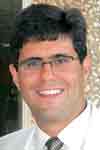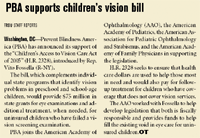Article
Electronic medical records in practice: are we there yet?
It is important to realize there are up-front costs in the form of time, money, and efforts associated with converting to EMR.

The thought of EMR still scares some doctors but this number is dwindling. The reason for this paradigm shift is obvious. EMR allow a medical practice to operate more efficiently and effectively than the traditional paper chart method. Simply put, use of EMR is better medicine.
Why is it better?

Reason number 2: Charts notes are always legible. This eliminates a multitude of problems stemming from misreading illegible, hand-written notes. Crucial mistakes can be avoided.
Reason number 3: The seamless integration with electronic refracting systems allows for instantaneous downloading of a highly accurate, reproducible refraction. Electronic refracting systems provide a quick, standardized, and straightforward approach to the mundane yet important task of determining a patient's eyeglass prescription. Eyeglass prescriptions can be printed directly to the optical shop. Furthermore, the capture rate of eyeglass sales invariably increases with this system.
Reason number 4: Most EMR programs can generate a referral letter from the exam data, which can then be custom edited in the exam room. These letters are then sent by mail, fax, or e-mail. This promotes prompt and effective communication between doctors. From a financial standpoint, these letters help reduce transcription costs.
Reason number 5: Most EMR programs today integrate with various testing equipment and utilize sophisticated drawing modules. Testing modalities-such as visual field testing, digital anterior and posterior segment photography, optic nerve imaging, fluorescein angiography, and corneal topography-can now be stored digitally and quickly retrieved. Instant, convenient access to these important ancillary studies correlates directly with superior care and better patient outcomes.
Reason number 6: EMR allow for expeditious review of critical patient data. For example, with one click of the mouse, all IOPs ever measured on a patient can be evaluated. This is very helpful when assessing the effectiveness of a treatment regimen in a glaucoma patient. Various methods of culling data can be set up to satisfy an individual doctor's needs.
Reason number 7: Medication prescriptions can be quickly transmitted to any pharmacy via wireless transmission or electronic fax. This saves the patient an inordinate amount of time since a medication prescription does not need to be physically dropped off at a pharmacy in order to be filled. Furthermore, some EMR programs have software that will determine if there is any contraindication in prescribing a specific medication. For example, a good software package will warn/prohibit the prescribing of a beta blocker to a patient who has chronic obstructive pulmonary disease or a carbonic anhydrase inhibitor to a patient with a sulfa allergy. Sophisticated systems will also evaluate the cross-reactivity of medications to be prescribed with medications that are currently being taken.
Newsletter
Don’t miss out—get Ophthalmology Times updates on the latest clinical advancements and expert interviews, straight to your inbox.




